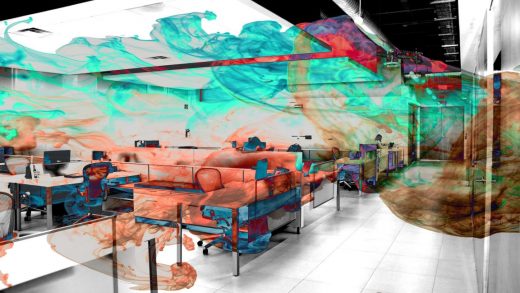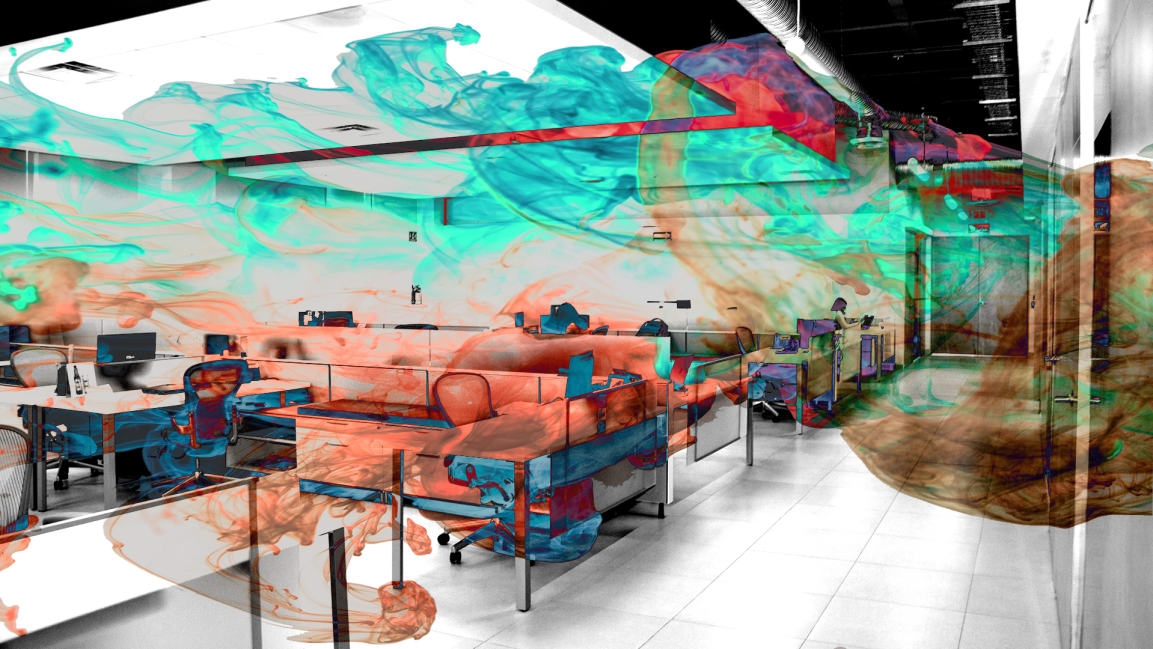5 strategies to fix a toxic workplace
In 1991, at the age of 19, I came out to my parents. It took every ounce of energy I had to finally reconcile my inner truth, let alone the herculean effort to come forward and share this truth with my family. I was immediately disowned and left homeless.
Six years later I made a beeline to the nearest store to buy a copy of Time magazine featuring Ellen DeGeneres on the cover. I ripped the cover off the magazine and taped it to my wall as inspiration, support, and relief. Ellen was a role model, a beacon of hope, and she helped me believe that the world could be different, welcoming, and safe.
It’s been a few decades since that Time magazine cover was taped to my wall. Today, I would rip it down after learning about the toxic environment and misconduct behind the scenes at The Ellen DeGeneres Show, a program well known for its “be kind” philosophy. Remaining the ever-vigilant eye to ensure safety for all, Ellen and her leadership team should have instilled a sense of belonging with an absolute intolerance to discrimination, harassment, and exclusion—all experiences Ellen knows too well.
But sadly, that was not the case. When you tolerate the intolerable, you condone unfathomable atrocities and advocate for toxic work culture, abuse, and dehumanization.
Now, Ellen has the opportunity to come out again and stand staunchly in the lead of white celebrities taking a salient stand in supporting and advocating the marginalized, disenfranchised, and often excluded communities. To create a culture that espouses “be kind,” you must understand how devastating exclusion is to their employees’ nervous systems. There are ways you can carefully mend the ruptures of inclusion and recreate a culture of belonging by gently reweaving safety for all employees at The Ellen DeGeneres Show.
Belonging is the human emotional need to be an accepted member of a group. Members of a specific group experience exclusion when the rules of inclusion are broken—either overtly or covertly—leading individuals to experience unwelcome or unsafe feelings with another person or group of people.
Exclusion emerges from the inability to truly trust others in close relationships, whether personal or professional. At the core of not trusting others is, as Seth Meyers stated in Psychology Today, “a strict resistance to feeling vulnerable with anyone at any time.” Avoiding vulnerability when engaging with others leads to a communication style of blaming, interrupting, dismissing, or ridiculing others. As someone’s lack of trust grows and fear of vulnerability around others increases, they will consider empathy a weakness or equivalent to being taken advantage of and contributing to losing power. Bullying, gaslighting, micromanaging, and refusing to receive feedback is now commonplace at this level of exclusion. Eventually, if the person has not been held accountable for any of their actions, it’s quite easy to slip into a more horrific form of exclusion—where they staunchly believe others are inferior to them. This level of exclusion is where we experience racism, sexism, xenophobia, and homophobia.
In his book The Culture Code, Daniel Coyle writes, “Vulnerability . . . is about sending a really clear signal that you have weaknesses, that you could use help.” This statement is incredibly problematic because when we “put aside our insecurities”—the places within us requiring additional support, care, and attention—we are discounting opportunities for self-reflection, self-care, and self-connection. When we label vulnerability a weakness, we are presupposing a “less-than” state which brings us right back to exclusion, creating an incredibly corrosive cycle.
Vulnerability has nothing to do with weakness and everything to do with resonance. Sarah Peyton, the author of Your Resonant Self, defines resonance as “The experience of someone else really understanding what things are like for a person and both people feeling that connection.”
Exclusion always starts innocently but quickly moves us into a place of disconnection, distrust, and fear. Our bodies contract and our minds shift us into survival mode. If we truly want to embody a culture of “being kind,” then we need to understand our own human neurology and identify our past experiences that lacked kindness.
For many, hostile experiences take place at work and collectively culminate to form a toxic, unkind office environment, such as at The Ellen DeGeneres Show. Here are five key tactics that will assist leaders in repairing work cultures torn apart by blame, lack of accountability, and trauma.
1. See people through a relational, rather than a functional, lens
The right hemisphere (RH) of the brain embodies the relational part of who we are, while the left hemisphere (LH) is the functionality of who we are. Each hemisphere sees the world in a unique way, causing us to speak differently, both to ourselves (our inner voice) and others.
Successful employees need acknowledgment from both representations to bring their full, authentic selves to work.
When residing in our LH, we focus on problem-solving—seeing what’s missing or wrong in the moment and then giving ourselves advice. Our RH allows us to focus on the partnership and relationality of the present interaction or engagement. Here, we access our feelings, needs, and ability to self-reflect and have concern for both ourselves and others.
Suppose managers operate primarily out of their LH, treating people as equations for accomplishment, solutions to problems, or obstacles impeding results. Operating out of the LH puts us at risk of losing sight of our employees’ humanity and quickly moves us toward excluding others, even unintentionally.
2. Receive feedback from a place of vulnerability and resonance
Engaging with others from our LH prevents us from being vulnerable and resonant. This quickly leads to purely data-based, fact-oriented, and functionally driven conversations. We forget to relate to others and are simply focused on crossing things off our to-do lists. If we find ourselves in a defensive stance, where we might dismiss another person’s experience, then we are most likely reacting from our LH. The RH holds the experiences of bodies, so when things get uncomfortable we tend to want to leave our body as quickly as possible and shift to the functional LH mindset.
Sometimes being in our body is incredibly difficult. “Trauma produces a recalibration of the brain’s alarm system, an increase in stress hormone activity, and also compromises the brain area that communicates the physical, embodied feeling of being alive,” according to Bessel van der Kolk, a Boston-based psychiatrist who specializes in post-traumatic stress disorder.
When we respond to an interaction from the LH, we risk stepping back into exclusion and defending our position with data. Instead, take a breath, move over into the RH, and listen deeply with greater curiosity. When we have difficult conversations and navigate conflict with open-heartedness, curiosity, and empathy, we are listening with our bodies. We understand feelings and gain clarity on what transpired and challenged the other person.
3. Rebuild trust by recognizing and appreciating employees
If many people are speaking through the language of exclusion, establishing a new style of communication is foundational. Prioritizing communication with care, respect and a willingness to learn is essential to reestablish team dynamics. The simplest way to begin rebuilding trust in the workplace is to separate “recognition” from “appreciation.” Recognition happens in the LH and is primarily focused on behavior or performance, while appreciation focuses on a person’s qualities or personal values. It’s important to ensure you’re embodying both when providing feedback.
Here is an example of feedback that encapsulates both:
Thank you for delivering the data reports ahead of schedule. You enabled our team to craft a solid message to the CEO. I am continually impressed with your ability to organize and prioritize the details needed for this project [RECOGNITION]. Thank you for your care and willingness to make sure everyone on the team has the accurate data [APPRECIATION].
This will take time, in the same way that learning a new spoken language takes patience, diligence, and practice. Over time, this will get easier.
4. Reestablish guidelines to ensure psychological safety at work
Google ran Project Aristotle in 2012 to determine the difference between highly effective teams and ones that were significantly less so. The project culminated in five key leadership elements—the number one being psychological safety. Psychological safety includes a group phenomenon called ”equality in distribution of conversational turn-taking.” Anita Woolly, the study’s lead author, analyzed various team projects and noticed that ”as long as everyone got a chance to talk, the team did well. But if only one person or a small group spoke all the time, the collective intelligence declined.”
Another aspect of psychological safety is ”average social sensitivity,” which means attuning to and deciphering the nuances of prosody and body language cues. Amy C. Edmondson defines psychological safety in her book The Fearless Organization as “the belief that the work environment is safe for interpersonal risk-taking.”
In order to move toward psychological safety, it is essential to be transparent about the lack of accountability in the past and commit to accountability going forward. Bring a consultant into the office to help navigate difficult conversations, and prioritize someone from the BIPOC community to really underscore that your actions are not just performative, but truly authentic.
As a group, get together and read Edmondson’s The Fearless Organization. Discuss what is working now, what is not working, and ways to be more inclusive, especially by prioritizing the BIPOC community that has been excluded in the past.
5. Read My Grandmother’s Hands, by Resmaa Menakem
When humans experience exclusion, neglect, or rejection, a wound opens in the psyche that registers as physical pain. The brain ultimately codes the event through its pain receptors, eventually leading the neural pathways to interpret persistent exclusionary experiences as trauma.
Epigenetic research demonstrates that trauma passes through families over time, and the tragic events of our previous generations—more than 200 years before us—are physically present in our cellular biology. Healing trauma must be resolved from within the body, and many modalities offer different forms of release and integration. Find the one that best suits you. Reading Resmaa Menakem’s work as a team or listening to his On Being interview with Krista Tippett is a great place to start.
Discipline, commitment, and patience are the key ingredients to any transformation. Whether it’s healing a physical injury or repairing psychological scars from an unsafe workplace culture, rebuilding a damaged environment can be done. It just takes time, dedication, and care.
Rajkumari Neogy is an epigenetic coach and executive consultant focused on the intersection of neurobiology, culture, and empathy in today’s business world. She is also the author of The WIT Factor: Shifting the Workplace Paradigm by Becoming Your Optimal Self.
(10)



